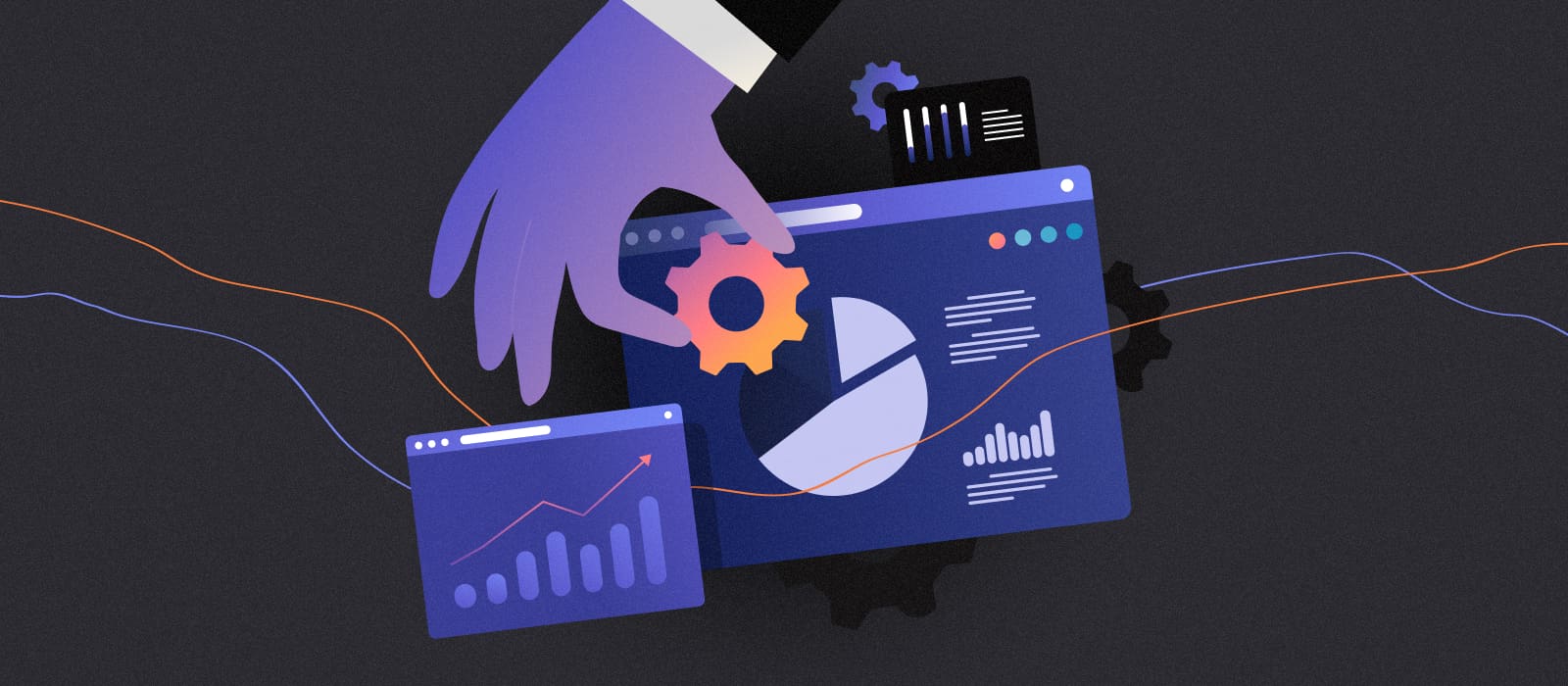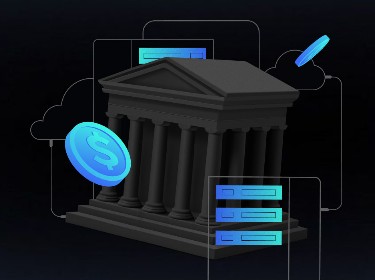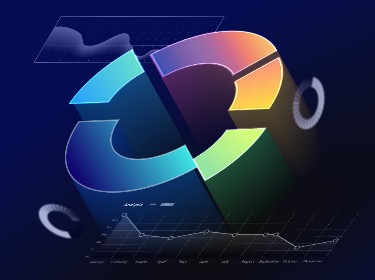By utilizing the appropriate data governance frameworks, organizations can enhance their data handling and protection. This not only ensures security but also provides a competitive edge in today's intricate business landscape.
The significance of data cannot be emphasized enough. By 2025, global data creation is projected to skyrocket to 180 zettabytes.
With such rapid growth, businesses face the challenge of managing, safeguarding, and utilizing their data effectively. This is where data governance frameworks step in, providing systematic strategies to ensure data is consistently managed, protected, and optimized for maximum value.
Read on to delve into the core concepts of data governance frameworks, their types, benefits, and methodologies, and learn how to design and put into action a strong framework for your enterprise.
What is a data governance framework and why do businesses need it?
A data governance framework encompasses a set of processes, policies, guidelines, and structures that organizations employ to manage and guarantee the high quality, security, usability, and consistency of their data assets. This framework requires a cross-functional approach and integrates various components, including but not limited to data stewardship, quality, and lifecycle management, among others.
Businesses need data governance to guarantee the accuracy, consistency, and security of their data assets. This not only enables more informed decision-making and ensures compliance with regulatory standards but also preserves the integrity and privacy of data. In turn, this fosters trust and bolsters operational efficiency.
Bring your data to life — explore the story it tells with our data visualization services & consulting
This article is part of our larger series dedicated to Data governance. To explore this topic in greater detail, here’s the list of articles we recommend:
An In-Depth Guide to the 15 Best Data Governance Practices and Principles for Your Business
How to Create Effective Data Governance Strategy: A Step-By-Step Guide
Unstructured Data Management From A to Z: Definition, Challenges, and Tools
What are the benefits of a data governance framework?
![]()
The advantages of data governance frameworks are numerous. The key benefits include enhanced data quality, heightened operational efficiency, bolstered trust among stakeholders, ensured regulatory compliance, and better data security.
Enhanced data quality
A data governance framework enforces accuracy, consistency, and reliability in organizational data. It eliminates anomalies and redundancies through validation and cleansing, which bolsters the credibility of analytics and ensures well-informed data-driven decision making.
Heightened operational efficiency
With data governance, businesses can minimize data overlaps and optimize their processes, resulting in faster operations and reduced costs. By establishing clear data standards and protocols, they also ensure smoother workflows and eliminate time-consuming data corrections and inconsistencies.
Bolstered trust among stakeholders
Through the transparent management of data, businesses cultivate a stronger bond with their stakeholders and customers. This commitment to data integrity and privacy fosters a deeper sense of trust and loyalty among all parties involved.
Ensured regulatory compliance
Adhering to data-centric regulations, businesses manage to sidestep legal pitfalls and financial penalties. Such proactive compliance also amplifies a company’s standing as a trustworthy and responsible entity in the industry.
Better data security
Implementing a data governance framework fortifies defenses against breaches and unauthorized intrusions while safeguarding sensitive information and highlighting a company’s commitment to data privacy and the robust defense of its assets.
Explore data governance best practices with our detailed guide
Best approaches to implementing data governance frameworks
There are various data governance framework models, and businesses typically select the one that is best aligned with their objectives, current data management practices, and overall convenience.
To date, the most recognized strategic and operational methods for implementing governance frameworks are top-down, bottom-up, center-out, silo-in, and hybrid.
Let’s delve deeper into each approach.
Top-down data governance
A top-down framework is driven by senior management that is responsible for strategic objectives and data policies at the organizational level. This approach ensures alignment between data initiatives and business goals and provides consistency in data standards and practices across all departments.
Bottom-up data governance
Originating at the operational or departmental level, a bottom-up data governance framework emphasizes grassroots data initiatives and solutions. It allows for flexibility based on specific data challenges and needs encountered. Over time, these localized efforts can coalesce into an organization-wide governance strategy.
Center-out data governance
Center-out governance begins with main data points and expands to cover departmental data. It blends central rules with team-level freedom, achieving both uniformity and customization. This data governance methodology connects broad data goals with specific local requirements.
Silo-in data governance
Silo-in governance focuses initially on isolated data repositories or departments, treating each as a unique entity. This method starts with specialized rules, gradually moving towards a more unified strategy. As governance progresses, efforts are made to link these silos and find common ground.
Hybrid data governance
Hybrid governance combines elements from both top-down and bottom-up approaches, tailoring strategies to specific business needs. It allows for centralized decision-making where consistency is crucial and offers localized flexibility where customization is important. This blend ensures a versatile, adaptive, and comprehensive data governance strategy.
See what it takes to create a robust data governance strategy
Which components should a data governance framework include?
Typically, an effective data governance framework should include the following components to ensure the proper management of business data:
Standards and guidelines that dictate data handling practices, setting the benchmarks for consistency, accuracy, and reliability throughout the organization.
Responsibilities and roles, including data owners, stewards, and custodians, are essential to ensure clarity in data management duties and accountability.
Data quality management techniques that would ensure the accuracy, timeliness, and reliability of data through systematic validation, cleansing, and monitoring processes.
Data security measures to safeguard data against unauthorized breaches, ensuring both internal security protocols and compliance with external privacy regulations are upheld.
Metadata management tools and strategies to trace the journey of data, its origin, and transformations, alongside the management of descriptive details about various data assets.
Data access and sharing protocols and mechanisms that determine who can view, modify, and distribute data.
Auditing and compliance systems to consistently monitor, review, and report on data activities, confirming that they remain in line with both internal guidelines and external regulatory requirements.
Discover insights and drive growth with our advanced data analytics services
How to create and implement a data governance framework in your business in 5 steps?
If you are planning to create and implement a data governance framework in your organization, you need to have a detailed and consistent guide to ensure you are on the right track.
We recommend reviewing the data governance framework implementation strategy proposed by our tech specialists at PixelPlex.
![]()
Step 1. Define your goals and conduct a data assessment
Start with defining the business objectives you aim to achieve with your data. Then, you can delve into assessing your current data landscape, evaluating data sources, quality, and usage patterns. This comprehensive assessment will serve as a foundation, ensuring your data strategy aligns with overarching business goals while spotlighting areas that require attention.
Incorporating insights from research and development can further enhance this process, allowing you to identify innovative opportunities and optimize your data utilization for future projects.
Step 2. Form a data governance team
In this step, you need to assemble a dedicated data governance council backed by the commitment of upper management. Each member should have clearly defined responsibilities and accountabilities, ensuring streamlined decision-making and efficient data management.
As part of the governance process, it is also advisable to establish communication channels for informing external stakeholders about data practices, providing full transparency and trust.
Step 3. Work out data governance policies
To shape your data governance, map out policies, standards, and procedures in line with your objectives and scope. Centralize around defining data quality metrics, security protocols, and data lineage practices, integrating structured workflows for tasks like data validation and cleansing. You can also rely on existing best practices and customize them to your organization’s specific needs.
Step 4. Roll out your data governance framework
This step would involve deploying your data governance and integrating it with existing systems while ensuring a seamless flow of data.
Afterwards, you need to onboard all relevant teams and departments and educate them about new policies, tools, and workflows. Comprehensive training sessions, complemented by detailed documentation, will aid in understanding and adherence. Plus, setting up dedicated support teams and communication channels will address real-time queries or issues arising from the new framework’s implementation.
Step 5. Monitor, refine, and scale
To sustain the effectiveness of your data governance framework, your business will need to conduct regular audits that scrutinize your activities, ensure strict adherence, and pinpoint areas ripe for enhancement. You can also ask for feedback from users and key stakeholders.
Plus, incorporating new data sources, integrating novel tools, and redefining objectives are paramount. Consequently, your governance structure should be fluid, ready to evolve in tandem with business growth and shifts in data strategy.
Harness the power of our professional business intelligence services and steer your business towards unparalleled success
Closing thoughts
Data governance frameworks are indispensable tools for businesses striving to maximize the utility of their data assets. They provide a structured approach to managing data quality, security, and compliance while aligning with overarching business objectives. Whether you opt for a top-down, bottom-up, center-out, silo-in, or hybrid approach, the key lies in tailoring the framework to your organization’s unique needs.
Understanding and implementing a robust data governance framework is complex but rewarding. If you find yourself in need of expert assistance, PixelPlex is here to help.
Specializing in big data consulting, PixelPlex can guide you through the intricacies of data governance, from planning to implementation. Don’t miss out on leveraging your data to its full potential — reach out to us today.




